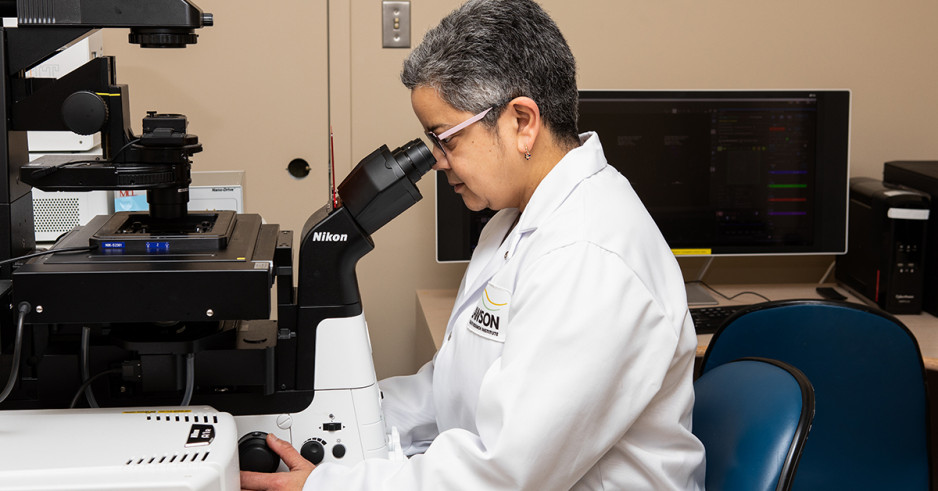Lighting the way to better heart care
The heart is one of the hardest working organs in the body, pumping vital oxygen and nutrients through the blood to keep the body’s system in good functioning order.
When the heart becomes damaged or weakened by other conditions – a syndrome called heart failure – a person can be left breathless, perpetually fatigued and at risk for serious health issues. It can lead to long hospital stays, ongoing hospital readmissions and, in certain cases, can be life-threatening.
“One of the biggest problems with heart failure is that it's nearly impossible to predict who will develop it,” says scientist Dr. Savita Dhanvantari at Lawson Health Research Institute.
Dr. Dhanvantari, along with her team of researchers, is using a leading-edge confocal microscope to explore – at a cellular level – an early biological marker (a warning sign of disease progression) for heart failure so that patients can be diagnosed well before symptoms appear.
The confocal microscope is no ordinary microscope. Lawson was the first in Canada to install this advanced and important instrument, which was made possible through donations made to St. Joseph’s Health Care Foundation. It remains one of four in the region being used to observe and study disease development and progression. It is also being trialed to support discovery of new drug and medical treatments.
This work complements the whole-body imaging that is done in conjunction with St. Joseph’s Nordal Cyclotron and PET Radiochemistry Facility, in which radioisotopes produced onsite are used to view 3D what’s happening inside the body in real time. In the case of Dr. Dhanvantari’s heart failure research, the team is using a fluorescent-tagged molecule called Cy5-ghrelin for confocal microscopy and a radioisotope called Fluorine-18 Ghrelin for whole-heart imaging. This imaging research is a breakthrough indicator for early detection to assist physicians and patients.
While the research is still in an experimental phase, Dr. Dhanvantari is excited about this discovery and sees its potential to improve care outcomes for patients who have experienced one or more heart events.
“Heart failure is extremely debilitating,” explains Dr. Dhanvantari. “Our goal is to be able to predict heart failure early on so that a patient can take proactive steps through medication and lifestyle changes to halt its progression.”
State-of-the-art technology like the confocal microscope is shaping the future of health care in our community. Such technology is made possible with your support. By donating to St. Joseph’s Health Care Foundation, you help invest in game-changing equipment that bridges the gap between good and great care.
